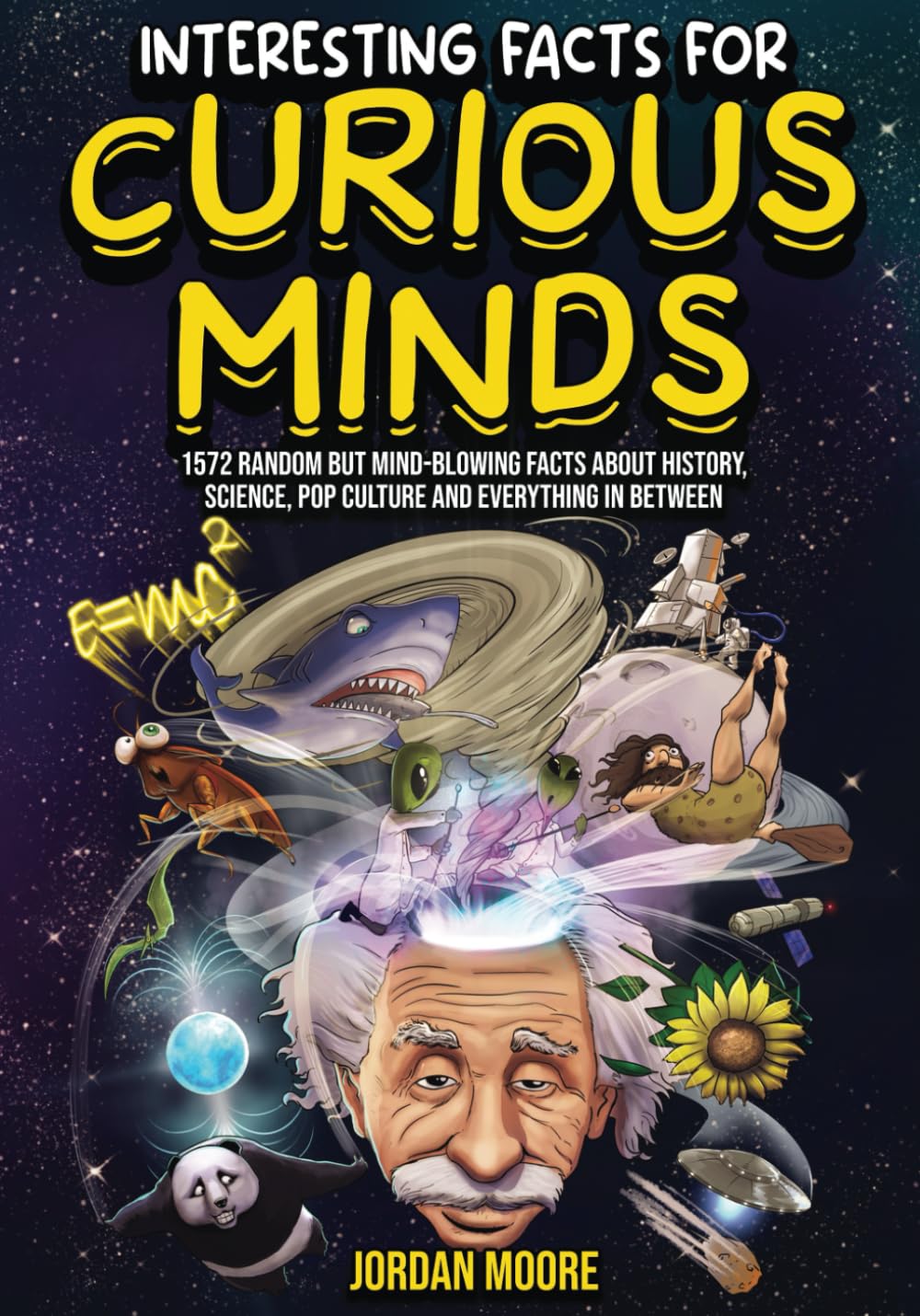
Interesting Facts For Curious Minds: 1572 Random But Mind-Blowing Facts About History, Science, Pop Culture And Everything In Between
Man’s Best Friend
byMan’s Best Friend is a fascinating exploration into the world of dogs, beginning with the origin of the name “Fido,” which is derived from the Latin word fidelis, meaning “loyal.” This term is synonymous with the devotion that dogs have displayed to humans for thousands of years. Dogs have been companions, protectors, and helpers, and their loyalty is unmatched in the animal kingdom. A particularly remarkable example of loyalty and longevity is Bluey, an Australian cattle dog from Rochester, Victoria, who lived to the impressive age of 29 years and 160 days, holding the record for the longest-lived dog. However, this chapter also provides a crucial warning for dog owners: chocolate can be extremely harmful to dogs due to the toxic alkaloid theobromine, which they are unable to metabolize, particularly dangerous for smaller breeds.
The chapter delves deeper into some fascinating and lesser-known aspects of dogs, like their unique identity markers. For example, just as human fingerprints are used for identification, dogs’ nose prints are distinct to each individual dog. The intelligence of dogs is another intriguing subject, with certain breeds like the Border Collie often regarded as the most intelligent due to their ability to learn and perform tasks quickly. In contrast, breeds like Beagles and Basset Hounds are known to be less trainable, although still highly loved and devoted companions. The chapter also touches on the ancient Egyptians’ deep relationship with dogs, with two distinct words for dog in their language: iu, possibly onomatopoeic, and chesum, which may have referred to a specific breed, illustrating the long-standing importance of dogs in human culture.
The chapter highlights the profound cultural impact that dogs have had throughout history, referencing the iconic dog Lassie. This well-known television dog, portrayed by several male dogs, became a symbol of loyalty and courage during the baby boomer generation. Dogs’ extraordinary senses, particularly their sense of smell and hearing, are also explored in detail. The olfactory portion of a dog’s brain is 40 times larger than that of humans, enabling dogs to detect scents with an unparalleled level of accuracy. The chapter also explains the scientific classification of dogs, noting that while they are part of the Canidae family along with wolves, foxes, and coyotes, domestic dogs are classified specifically as Canis familiaris or Canis lupus familiaris.
The evolution of dogs and their roles in society is another key focus of this chapter. It mentions how the popularity of greyhound racing in the U.S. has declined over the years, despite the greyhound’s remarkable speed. It also emphasizes the significant role dogs play in law enforcement, where they are trained to sniff out contraband, explosives, and drugs. This illustrates how dogs’ specialized abilities have been harnessed for practical purposes. The intelligence of domestic dogs is likened to that of a two-year-old human child, but with the added benefit of being highly trainable, a trait that allows dogs to excel in a variety of roles.
Crossbreeding within the Canis genus has resulted in the creation of hybrid breeds, such as the Sulimov dog, a mix between a jackal and a dog. These hybrids are an example of how the diverse characteristics of dogs, foxes, and wolves can be combined to create animals with unique abilities. The chapter also touches on the popular dogs in entertainment, such as Higgins, the dog who played Benji in the famous film series. Additionally, the Labrador Retriever is highlighted as the most popular breed in the United States due to its intelligence and friendly disposition. The chapter also mentions that, like humans, dogs are believed to dream, a finding that has been supported by scientific research.
The chapter provides further insight into the ancient relationship between humans and dogs, especially in Egypt, where breeds such as Basenjis, Salukis, and Greyhounds were kept. In contrast, the Dingo, a wild dog, is considered the ancient breed of domestic dog native to Australia. The Dingo’s role in Australian culture has been central, with its reputation as a survivor and adapted hunter. It’s interesting to note that Dingoes have influenced the development of modern Australian domestic dogs and have contributed to Australia’s rich history of dog breeding.
Dogs have a variety of fascinating behaviors and abilities that continue to intrigue scientists and dog lovers alike. The chapter describes the impressive speed of greyhounds, known for their ability to reach high velocities, making them suitable for racing. It also details the habit that many dogs have of kicking their hind legs after relieving themselves, a behavior believed to be a way of marking their territory using the scent glands located in their paws. This behavior further demonstrates how dogs have developed unique ways of communicating and claiming their space.
The chapter concludes with a humorous anecdote about the dogs of U.S. President Lyndon B. Johnson, who created a stir after being photographed in a controversial manner. The two beagles, named Him and Her, became famous for their mischievous antics and were the subject of much media attention during Johnson’s presidency. This story not only underscores the playful side of dogs but also highlights their role in shaping political history, showing how even the pets of prominent figures can make a lasting impression on society. Overall, the chapter illustrates how dogs, through their loyalty, intelligence, and unique behaviors, continue to captivate and enrich the lives of people around the world.

